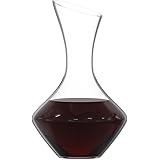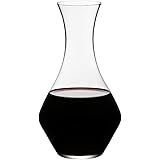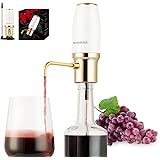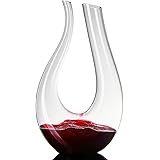Unveiling the Simplicity of Homemade Grape Wine
Crafting a batch of **homemade grape wine** is an accessible and rewarding experience, particularly when utilizing a straightforward approach. The beauty of this method lies in its minimal requirements and the relatively short time frame needed to produce a delightful beverage. This traditional **grape wine recipe** provides a wonderful entry point for those interested in the art of winemaking, offering a chance to create something truly unique from the comfort of one’s own kitchen.
Furthermore, the process allows for a deeper connection to the ingredients, transforming fresh, seasonal grapes into a complex and enjoyable drink. Understanding the basic principles, as outlined in the video and elaborated upon here, empowers aspiring vintners to manage each stage effectively. It is believed that with careful attention to detail, a remarkably palatable **homemade wine** can be achieved.
Selecting Your Grapes for the Best Homemade Wine
The foundation of any exceptional **grape wine recipe** is the quality of its primary ingredient: the grapes. As mentioned in the video, purchasing grapes when they are in season is a judicious choice, not only because they are typically more affordable, but also because their flavor and sugar content are at their peak. This optimal ripeness is crucial for achieving a balanced and richly flavored **homemade grape wine**.
It is important to select grapes that are plump, firm, and free from mold or damage. Different grape varieties will impart distinct characteristics to your **homemade wine**. For example, Concord grapes are often chosen for their robust flavor and aroma, while Niagara grapes offer a sweeter profile. It is advisable to experiment with local varieties that are readily available to discover what suits your palate best for your **homemade wine** endeavor. After selection, the grapes must be thoroughly washed to remove any pesticides or surface contaminants, ensuring a clean start to the fermentation process.
The Essential First Steps: Preparation and Initial Fermentation
Once the grapes have been meticulously cleaned and dried, the next critical phase in your **homemade wine recipe** involves preparing them for fermentation. The video highlights a crucial tip: crushing half of the grapes. This action is paramount as it ruptures the grape skins, allowing the precious juices and natural sugars to be released. This liberation of liquid is vital for initiating the fermentation process, as it provides the necessary medium for yeast activity.
A rolling pin is a convenient tool for this task, but alternatively, a potato masher or even clean hands can be utilized to achieve the desired effect. Subsequently, the crushed and whole grapes are placed into a clean glass bottle. An addition of 800 grams of sugar is then incorporated into the mixture. This sugar serves a dual purpose: it acts as a primary food source for the yeast and contributes significantly to the final alcohol content and sweetness of your **homemade grape wine**. The mixture is then thoroughly combined, ensuring the sugar is adequately dissolved, before the bottle is securely sealed.
The sealed bottle is then moved to a warm environment, where it is allowed to ferment for approximately three days. This initial fermentation period is characterized by vigorous activity, as naturally occurring wild yeasts, present on the grape skins, begin to convert the sugars into alcohol and carbon dioxide. Observance of bubbling within the bottle is a clear indicator that the fermentation process is actively underway, signaling the transformation of simple grape juice into nascent **homemade wine**.
The Refinement Process: Straining and Secondary Fermentation
Following the initial three-day fermentation period, a pivotal step in achieving a clear and pure **homemade grape wine** is the straining of the mixture. This process involves carefully separating the liquid must from the solid grape skins, pulp, and seeds. The removal of these solid components is essential to prevent the development of undesirable off-flavors that could otherwise taint the delicate profile of your **homemade wine**.
A fine-mesh sieve or a cheesecloth is commonly employed for this purpose, ensuring that only the liquid is transferred. The strained liquid is then poured into another meticulously cleaned bottle. This transfer to a clean container is not merely for aesthetics; it provides a fresh environment for the secondary fermentation stage to occur, allowing for further refinement of the wine. The liquid is then permitted to ferment for an additional two days.
During this secondary fermentation, any remaining sugars are slowly converted, contributing to the final alcohol content and allowing the flavors to meld and mature. This stage often proceeds at a slower pace than the initial fermentation, resulting in a smoother, more refined **homemade grape wine**. It is generally understood that a consistent, moderately warm temperature is ideal for supporting optimal yeast activity throughout both fermentation cycles.
Achieving the Perfect Finish: Flavor Profile and Serving Suggestions
Upon completion of the full five-day fermentation period, a distinctly flavored **homemade grape wine** is produced, characterized by a delightful balance of sweetness and richness. This specific **grape wine recipe** yields a product that is designed to be slightly sweet, a characteristic highly appreciated by many palates. The natural sugars from the grapes, complemented by the added sugar, contribute to this pleasing sweetness, while the fermentation process ensures a robust and full-bodied taste.
This delightful **homemade brew** is exceptionally well-suited for social occasions, making it an ideal choice for serving to guests. The unique charm of a beverage crafted by hand often sparks conversation and adds a personal touch to any gathering. It is recommended that the wine be chilled before serving to enhance its refreshing qualities. Furthermore, for those interested in a slightly drier profile, the sugar content can be subtly adjusted in future batches, though it is suggested to adhere to the initial recipe for the first attempt to fully appreciate its intended flavor. Such an exquisite **homemade grape wine** is guaranteed to be a topic of admiration and enjoyment among those who appreciate traditional, handcrafted beverages.







